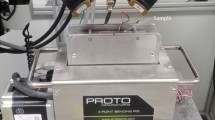Abstract
To determine the minimum crack width that can be detected using the impact-echo method, two types of laboratory experiment on concrete plate specimens were conducted. In each experiment, a crack was propagated through the plate parallel to the plate surfaces, while surface displacement caused by crack opening was measured and impact-echo tests were performed along the crack trajectory. The relationship between the surface displacement and the real crack opening displacement was established using the results of nonlinear fracture analyses (reported elsewhere). The minimum crack width was determined by estimating the crack opening displacements for each impact-echo test location.
Resume
On a exécuté deux types d'essais en laboratoire sur des échantillons de plaques de béton afin de déterminer quelle est la fissure minimale détectable par la méthode d'émission acoustique. Dans chaque essai, une fissure était propagée à travers la plaque parallèlement à la surface, tandis que le déplacement superficiel entraîné par l'ouverture de la fissure était mesuré et des essais d'émission acoustique réalisés le long du trajet de la fissure. En utilisant les résultats des analyses de rupture non linéaire, on a établi la relation entre le déplacement superficiel et le déplacement de la véritable ouverture causée par la fissure. On a déterminé la largeur minimale de la fissure par l'estimation des déplacements d'ouverture à chaque point par la méthode d'émission acoustique. On présente ici les résultats des essais. Dans un article ultérieur on donnera les résultats des analyses de rupture.
Similar content being viewed by others
References
Cheng, C. and Sansalone, M., ‘Determining the minimum crack width that can be detected using the impact-echo method. Part II: Numerical fracture analyses’,Mater. Struct. (1995) in press.
Sansalone, M. and Carino, N. J., ‘Impact-Echo: A Method for Flaw Detection in Concrete Using Transient Stress Waves’, NBSIR 86-3452, National Bureau of Standards, Washington, DC/PB 87-10444/AS (National Technical Information Service, Springfield, MA, 1986).
Protor, T. M., ‘Some details on the NBS conical transducer’,J. Acoustic Emission 1, No. 3 (1982) 173–178.
Pratt, D. and Sansalone, M., ‘Impact-echo signal interpretation using artificial intelligence’,Mater. J. ACI 89 (1992) 178–187.
Cheng, C. and Sansalone, M., ‘The impact-echo response of concrete plates containing delaminations—numerical, experimental, and field studies’,Mater. Struct. 26 (1993) 274–285.
Broek, D., ‘Elementary Engineering Fracture Mechanics’, Chap. 5 (Martinus Nijhoff, 1986) pp. 137–140.
Author information
Authors and Affiliations
Rights and permissions
About this article
Cite this article
Cheng, Cc., Sansalone, M. Determining the minimum crack width that can be detected using the impact-echo method Part 1: Experimental study. Materials and Structures 28, 74–82 (1995). https://doi.org/10.1007/BF02473174
Issue Date:
DOI: https://doi.org/10.1007/BF02473174




